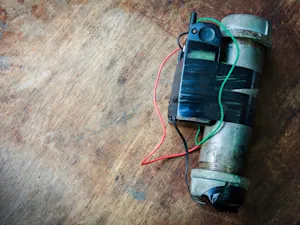
5 Self-Defense Tips to Keep You Safe
In an unpredictable world, knowing how to defend yourself can be a lifesaver. Self-defense techniques are not just about physical strength — they are about awareness, confidence, and the ability to protect yourself in various situations. Whether you're at home, in your car, or out on the street, these essential self-defense strategies can help you stay safe.
1. Trust Your Instincts
One of the most powerful tools in self-defense is your instinct. Often, people have a gut feeling when something is wrong but ignore it out of fear of overreacting. Trusting your instincts can prevent a dangerous situation before it escalates. If something feels off, it's crucial to listen to that inner voice and take action to protect yourself.

2. Practice Target Denial
Making yourself a less accessible target is a key preventive strategy. Being aware of your surroundings can help you take measures to avoid potential threats. Simple actions like walking in well-lit areas, locking your car doors immediately, and staying alert can make a significant difference in your safety. By avoiding isolated places and being mindful of your environment, you can reduce the risk of an attack.
3. Present Yourself With Confidence
Attackers often look for easy targets — those who appear distracted, timid, or unaware. Presenting yourself with confidence can deter potential attackers. Walking with your head up, making eye contact, and keeping your hands free can make you look less like a victim. Confidence not only helps in preventing attacks but also prepares you to act decisively if needed.
4. Set Strong Verbal Boundaries
Good verbal skills are an essential aspect of self-defense. Assertive communication can dissuade a potential attacker. If someone invades your personal space or makes you feel uncomfortable, use a firm and loud voice to set boundaries. Saying "back off" loudly can attract attention and signal to the attacker that you are not an easy target. Practicing strong verbal boundaries can give you the confidence to confront a threat before it becomes physical.

5. Keep Your Techniques Simple
In a high-stress situation, complex movements can be difficult to execute. Stick to simple, effective techniques such as the heel-palm strike, eye strike, and knee strike. These moves are straightforward and can be performed even when adrenaline is high. Practicing these basic techniques regularly can ensure you can use them effectively when needed.
Knowing and practicing self-defense techniques is crucial for personal safety. Trust your instincts, make yourself a less accessible target, present yourself with confidence, set strong verbal boundaries, and keep your techniques simple. These strategies can empower you to protect yourself and potentially save your life.
References: University of California Washington Center - 10 Self-Defense Strategies Everyone Needs to Know to Survive | 4 Basic Self-Defense Moves Absolutely Everyone Should Know























